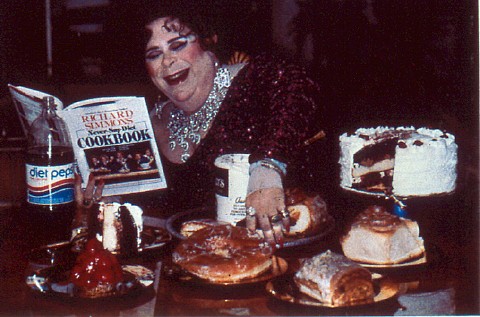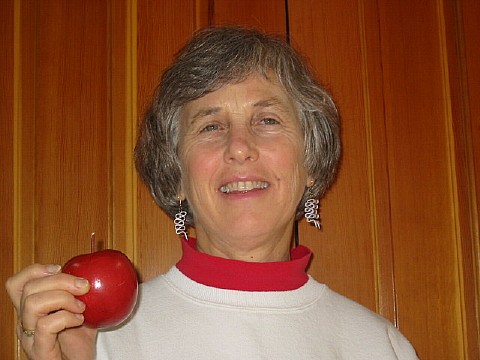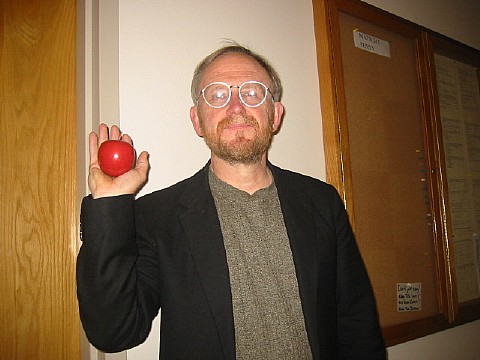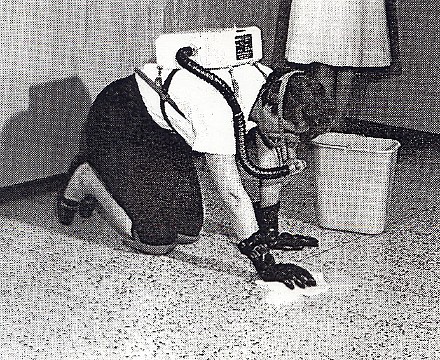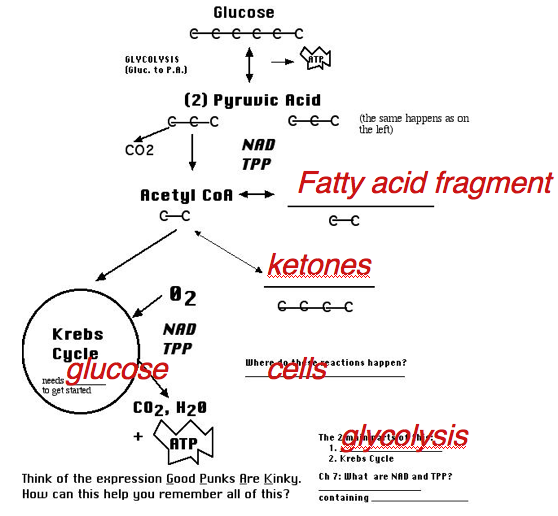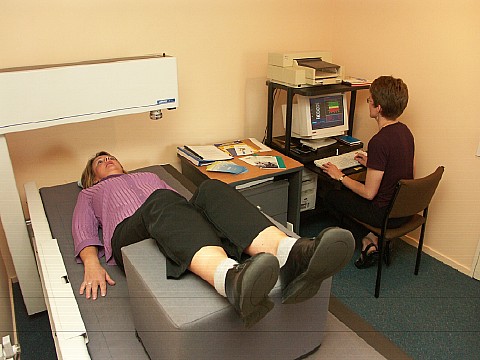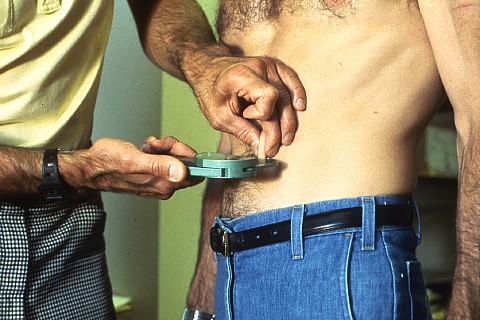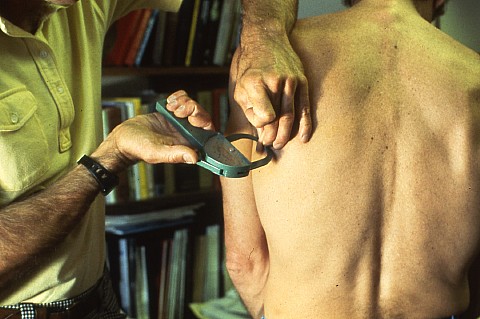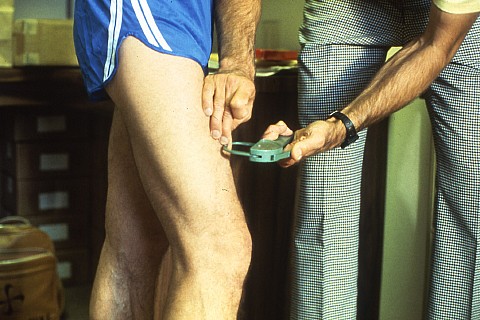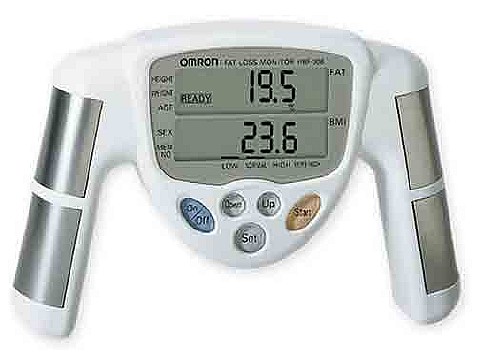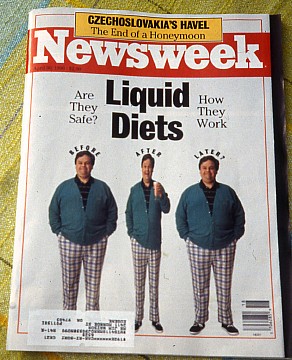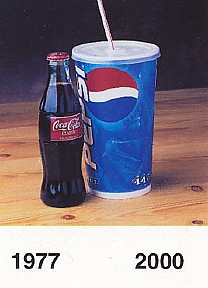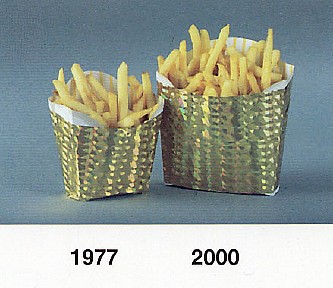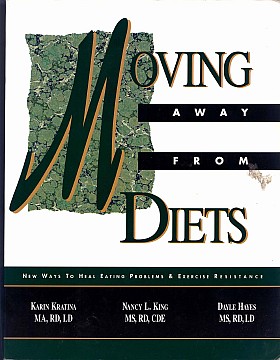There is considerable proof that much obesity is
genetically based. Partly using studies of twins
separated at birth and raised in two different households,
numbers such as these have been estimated:
o If
1 parent is obese, there is 60% chance that the child
will be heavy.
o If 2 parents are obese, there is
90% chance that the child will be heavy
HOW GENES MIGHT PLAY A ROLE:
1.
There could be genetic variations in perceptions
of hunger
and appetite.
As mentioned before, hunger is the physical need
to eat. Genes in fat cells direct the
making of ghrelin, a peptide hormone
produced by stomach and small intestinal cells.
It is thought to increase feelings of hunger
in order to stimulate eating.
Appetite is the psychological desire
to eat creating satiety (feeling full).
Genes in fat cells direct the making of leptin,
also a peptide hormone, but one that is produced
by adipose (fat) cells. It plays a role in body weight
regulation by acting on the hypothalamus to suppress
appetite and burn fat stored in adipose tissue.
Perhaps the brain cells of obese people ignore
these hormones, just as some diabetics' cells (Type 2
diabetics) ignore insulin.
Eve Van Cauter, an endocrinologist at
the University of Chicago who is shown above, calls
ghrelin and leptin
the “yin and yang" of eating regulation.
In experiments by Van Cauter and others,
sleep-deprived adults produced more ghrelin,
a hormone that promotes hunger, and less leptin,
a hormone that signals fullness.
The more your genes
direct the making of lipoprotein lipase enzyme (LPL),
the more easily fat cells store fat.
As page 326 in the text says, LPL is "an
enzyme mounted on the surface of fat cells that
splits triglycerides in the blood into fatty acids and
glycerol to be absorbed into the cells for reassembly
and storage".
3. Genes regulate thermogenesis,
sometimes called the thermic effect of food (TEF).
Some people's genes may direct the expenditure of
a lot of energy in thermogenesis, producing abundant
heat without performing any useful work.
There could be less
of a TEF happening in obese people.
If you were a hunter-gatherer who lived in a feast
& famine situation, would you like to have a high
TEF?
This past year I've heard of a new area of genetic
research that some are calling "epigenetics".
The new addition of the textbook contains
information about it. It has an addition to
Table 9.4 ("Selected Theories of Metabolic Causes of
Obesity"). They call this theory "Fetal
programming theory" and here's what the text says:
The
children
of mothers who either starved or were obese during
their pregnancies more often grew to be overweight
or obese themselves. An energy-lean or
energy-rich prenatal environment may influence fetal
genetic expression for enzymes involved in energy
metabolism: the underfed fetus adapts by producing
more energy-conserving metabolic systems; the richly
supplied fetus may adapt by producing more
fat-storing enzymes and cells.
VII The Mystery of
Obesity: Outside the body causes
A. Lack
of Exercise
There are all sorts of
reasons why we're getting less exercise these days.
One of them is the lack of PE classes in schools.
They've been a casualty of
- decreased school funding and
- the increasing pressure for schools to focus on
academics so students score well on state-wide
academic tests.
B. TV.
Nutritional problems with excess TV watching:
- Although some people work out when watching TV,
many of us are not moving much, so it takes
away from the hours of moving in the day.
And TV can have what I call the "zombie effect".
Two of the children in the photo above have
parents who were LCC nutrition faculty at the time and
watching TV turned them into "zombies".
Research has shown that while watching TV, BMR falls
even lower than just sitting around when you're not
watching TV.
- People often mindlessly snack when they're
watching TV. Since they're not really paying
attention to what they eat, they may eat more than
they need to be satisfied.
- Many TV ads are for highly processed and high
calorie foods and the ads make you want the food.
- Many of the actors and actresses on TV have
unrealistic body shapes which might encourage eating
disorders.
C. Environment
or External Cues.
These are all of the sight, sound and smell cues in
our environment that encourage us to overeat.
Foods high in sugar are especially tempting and take the
least energy to digest. Foods high in fat are also
very tempting. They take a lot of time to digest,
but they may not satisfy us because they don't take up
much room in our stomach.
I saw the below image at a conference I
went to on obesity, where the speaker was
comparing our current situation (a body that is set up
to deal with scarcity, not abundance, in an environment
where we have every reason to over eat, and not move) to
a polar bear in the Sahara dessert. A polar bear
is designed to withstand frigid temperatures, not
heat. We physiologically are wired for hunter and
gather lifestyles where we have to work really hard for
precious Calories in return. When we are put into
our current "toxic" food environment our bodies go
haywire, and as a result are developing chronic diseases
like heart disease and diabetes at alarming
rates.
A big external cue that encourages us to
eat is marketing. Watch the following clip on food
marketing.
D. Some
people overeat because of
1.
Habit
2. Stress
3. Because they're tired or
4. Because they're bored
E.
Alcohol can encourage fat storage.
This is something I
want to learn more about. As page 95 in the text
says, upon exposure to alcohol, the liver speeds up its
synthesis of fatty acids.
F. Weight
Cycling is the on again-off again dieting that some people
experience.
We get all sorts of cues in our culture that dieting is
a good thing. But weight loss diets seldom are
successful in achieving long-term weight loss.
Instead, what can happen after successful weight
loss is that the person begins overeating, gaining more
weight than what they weighed before the diet.
G.
The Set-Point Theory
is the idea that we all have an approximate weight our
body wants and it's very difficult to get more than 10
pounds above that weight or more than 10
pounds below that weight.
|
